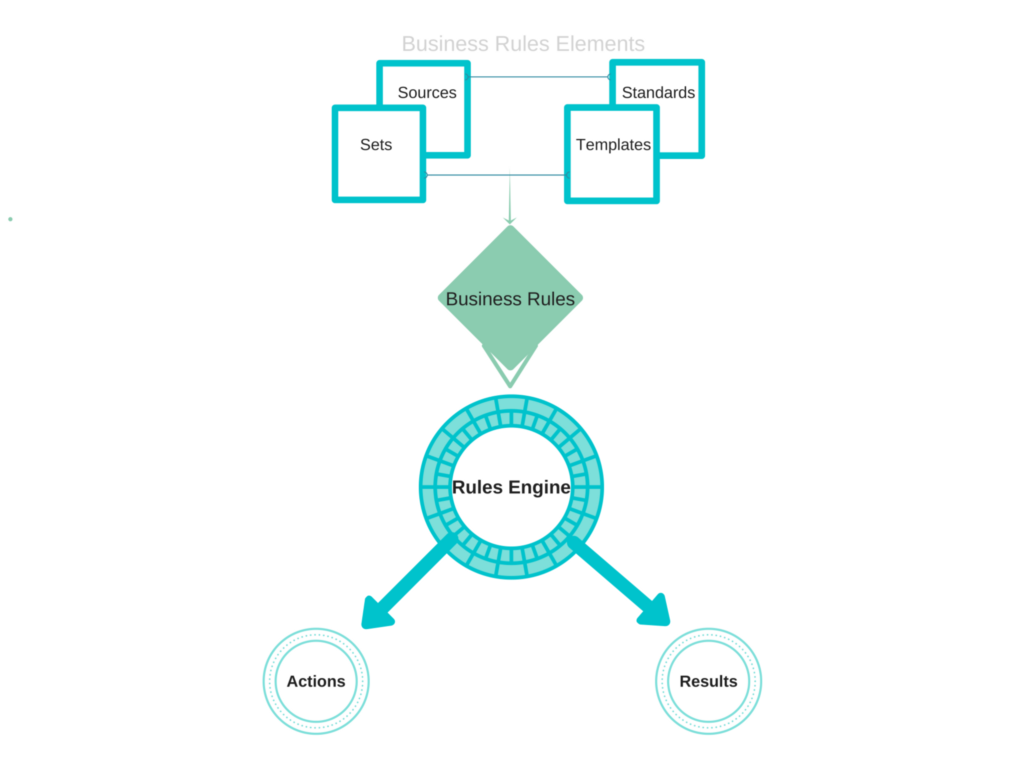Understanding business rules and rules engine (Business Rules Engines BREs)
A few posts earlier, I had spoken of operationalizing data analytics and some of its crucial components. While I have already touched upon how to build a customer database and how to draw up a prospects list, today, I shall be talking about the crucial ingredients that go into making a Business Rules Engine.
Every business that has decided to use advanced analytics to further its cause will, at some stage, need to do this – build a Rules Engine. But before understanding what goes into building one, one needs to comprehend:
(a) What exactly is a Rules Engine?
(b) Why is one required?
(c) What are business rules? (an important foundation of a good Rules Engine)
Simply put, a Rules Engine is a tool that is required to execute or achieve the stipulated business rules of an Enterprise.
Table Of Contents
- What are Business Rules Engines?
- Importance of Business Rules
- Business Rules Management System
- What is a Rules Engine?
What really are Business Rules Engines?
What really are business rules engines (BREs) then? A simplistic explanation of business rules is of them being decision points in a business process.
Eg: If ‘Group Yellow’ of customers is found to be responding to email every week but ‘Group White’ is observed opening emails twice a week, then the business rules will create a triggered response to both these groups by sending them lucrative offers over email at the designated frequencies.
From the above example, another thing becomes pretty obvious – typically, business rules are structured in a well-defined manner – like a pair of ‘condition and action’ statements.
It is always a good practice to write rule conditions as a “set” in which all “conditions” must be met before that rule is triggered into action. Thus, business rules combine facts and conditional statements.
In practical terms, it means that a business rule may, for example, identify the development of a certain business situation and raise a business event, or create higher-level business knowledge.
An example of the latter would be appraising whether a loan applicant has met all the listed regulatory-based rules or not.
Business rules are compiled in what is called rule sheets. The latter is a set of rules that share common actions.
Often called decision tables, these contain exhaustive and exclusive rules. The decision tables must be able to “return” a single set of results.
Are you ready for your business transformation?
Why are Business Rules so Important?
First and foremost, for business agility. They are needed for a faster market response and quicker comeback to business threats. Business rules are also a must for improved decision making, and cost reduction.
Eg: Having business rules in place helps in reducing IT costs and even legal costs arising from bad decisions.
What does a Business Rules Management System include?
Every Business Rules Management system must include the following components:
- Rules repository
- Design tools
- Rules management application
- Validation and verification
- Rules Engine
- Operational database
- Production application
Sources of business rules
Rules can be extracted from:
- People, including subject matter experts
- Documents, including manuals and company policy
- Computer code
Business rules standards
- The naming of rules must be consistent (standardized)
- Keywords must be included in rule names
Business rules sets
- Set up a mechanism for organizing rules
- Rules should be grouped consistently by product or subject
Business rules templates
- Needed to provide structure for rules
- To define rules in simplest forms
- To be stored in rules depository

What is a Rules Engine?
So coming back to Rules Engine – this is a tool that supports business rules, facts, priority, preconditions, and other functions.
A Rules Engine software is a component of a business rule management system that allows to register, define, classify, and manage all the business rules.
One other definition of a Rules Engines is that it tells business owners ‘what to do’ but not ‘how to do it.
To create the infrastructure that deploys a Rules Engine it is imperative to have the assimilation of Business Process Management and the Business Rules Management system (explained above); the latter is based on processes responding to events or examining business judgments that are, in turn, defined by business rules.
A Rules Engine uses algorithms and polls the database with a set of customer profiles to get the customer’s interactions from across the Internet or smartphones or social networks or even physical channels and create a triggered response on the most preferred customer channel with an engaging proposal.
An example of the above could be: Send emails to the customers who meet the following rule:
Select segments {0-5} + Total opens in last 3 months { > 15} + Browse page view in past 3 months { > 10} + Number of Days to Expiry {0-30} + {Unused CECs < {0.5} +Activity_code on Web = {4}
Customization of the rules can be done from an admin console.
Before I sign off, remember, a business software system is geared to handle complex repetitive tasks that have been keyed in by your Enterprise.
The system is encoded with the clear business logic to accomplish these jobs, but at the same time, must be flexible to change.
Rules Engines have thus been created to simplify the development and deployment of these changes; they have to implement the business rules independent of the procedural code, allowing for rules modifications without changing the underlying code at all.
An Engine That Drives Customer Intelligence
Oyster is not just a customer data platform (CDP). It is the world’s first customer insights platform (CIP). Why? At its core is your customer. Oyster is a “data unifying software.”
Liked This Article?
Gain more insights, case studies, information on our product, customer data platform


No comments yet.